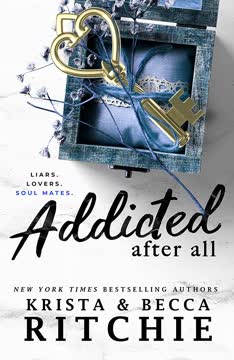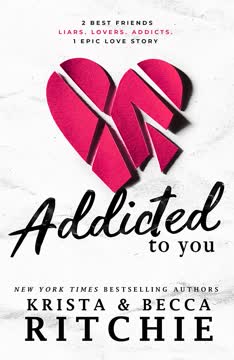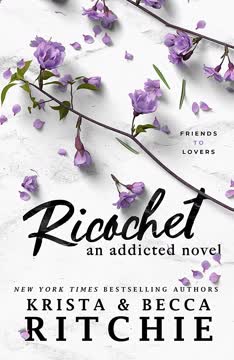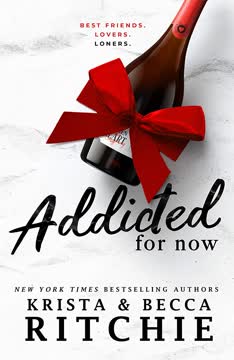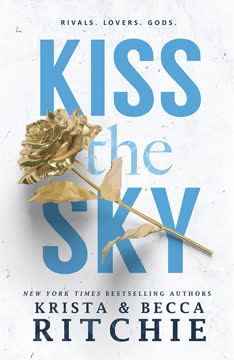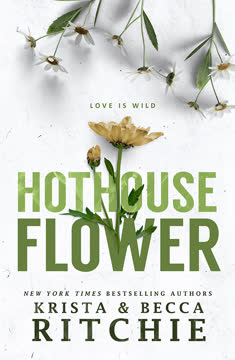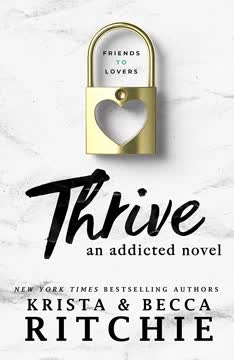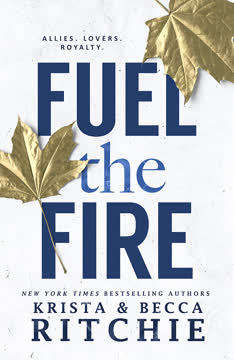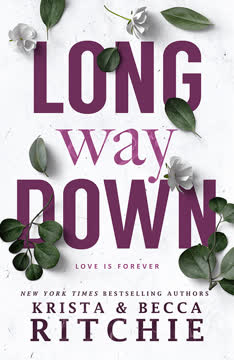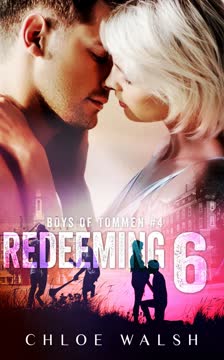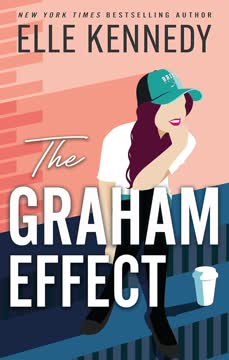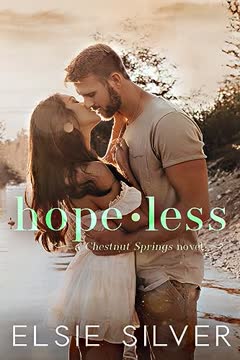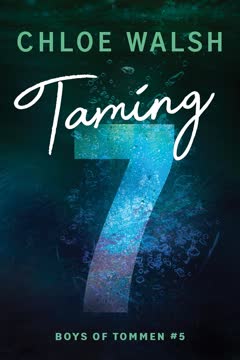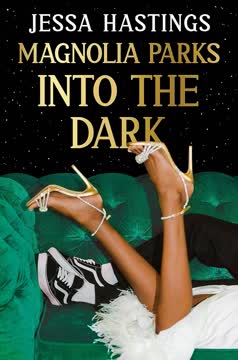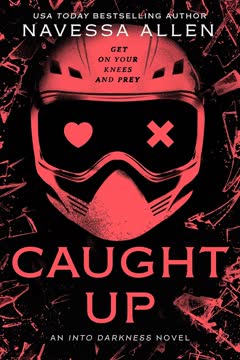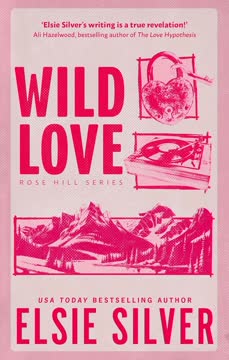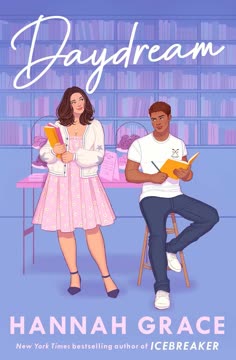Plot Summary
Midnight Paintball Panic
The story opens with a jolt: a group of teenagers attack the Hale-Calloway house with paintball guns, shattering the fragile sense of safety for Lily, Lo, and their close-knit circle of friends and family. The incident is more than a prank—it's a reminder that their fame, and the public's obsession with their private lives, has real, dangerous consequences. Lo and Ryke chase down the teens, but the confrontation is less about revenge and more about the futility of fighting back against a world that refuses to see them as real people. The event sets the tone for the book: the struggle to protect loved ones, the scars of trauma, and the limits of control in a life lived under a microscope.
Sisters and Scars
In the aftermath, the Calloway sisters—Lily, Rose, and Daisy—gather in a bathroom, tending to Daisy's panic attack. Their bond is both a comfort and a source of tension, as each sister copes with her own wounds: Lily's sex addiction, Rose's perfectionism, Daisy's PTSD. The sisters' dynamic is raw and real, full of awkward humor and fierce love. Daisy's vulnerability is met with support, but also with the unfiltered honesty that only siblings can provide. The chapter explores how trauma ripples through families, and how healing is a collective, messy process.
The Unbreakable Circle
The six friends—Lily, Lo, Rose, Connor, Ryke, and Daisy—reconvene, their relationships tested by the night's events. The group's dynamic is shifting: new romances, pregnancies, and old resentments threaten their unity. Yet, in crisis, they close ranks, debating how to respond to the harassment. The decision not to retaliate is a sign of growth, especially for Lo, who is learning to break the cycle of escalation. The chapter highlights the group's codependency, their need for each other, and the ways they both enable and save one another.
Pregnancy, Rumors, and Resolve
Lily and Rose's pregnancies are under constant scrutiny, fueling tabloid rumors and public speculation. The women grapple with fears about motherhood, the legacy of their addictions, and the judgment of a world eager to see them fail. Lo and Ryke, meanwhile, struggle with their own anxieties about fatherhood and the pressure to be better than the men who raised them. The group's fame is both a shield and a weapon, and every choice—what to share, what to hide—feels loaded. The chapter explores the intersection of private pain and public spectacle.
The Gender Reveal
The group gathers for a tense, emotional gender reveal. Lily and Lo learn they're having a boy, a moment of joy tinged with anxiety about the future. Rose, unable to face the truth, burns her own gender reveal envelope, choosing to wait until birth. The scene is a microcosm of the book's themes: the desire for control, the fear of the unknown, and the ways family both wounds and heals. The group's reactions—tears, laughter, arguments—are messy and real, underscoring the complexity of love and loyalty.
Love in the Crossfire
As Lily and Lo navigate the challenges of pregnancy and recovery, their relationship is tested by old patterns and new responsibilities. Lily's sex addiction is both a source of humor and pain, her compulsions flaring as she tries to balance desire with self-control. Lo, sober but still haunted by his past, learns to be present for Lily and their unborn child. Their intimacy is raw, honest, and often interrupted by the chaos of their lives. The chapter explores the ways love can be both a refuge and a battleground.
The Price of Fame
The group's fame continues to attract unwanted attention, from paparazzi to neighborhood teens. A car accident, triggered by a paparazzi chase, sends Lily to the hospital, reigniting fears about safety and the cost of living in the public eye. The incident is a turning point: the group must decide how to protect themselves and their children without losing their sense of self. The chapter examines the toll of constant surveillance, the erosion of privacy, and the resilience required to survive in a world that refuses to look away.
Family, Fears, and Forgiveness
The group's parents—Jonathan Hale, Greg Calloway, and Samantha Calloway—loom large, their choices shaping the lives of their children. Jonathan's demand that one of the four (Lo, Ryke, Lily, or Daisy) take over Hale Co. forces the group to confront questions of legacy, ambition, and sacrifice. Old wounds resurface: Jonathan's alcoholism, Greg's emotional distance, Samantha's favoritism. Yet, amid the pain, there are moments of forgiveness and understanding, as the characters learn to see their parents—and themselves—with new eyes.
The Breaking Point
The pressure mounts as the group faces escalating harassment, public scrutiny, and personal demons. Jonathan's relapse into alcoholism is a devastating blow, especially for Lo, who must confront the possibility of losing his father. The group's unity is tested by secrets, jealousy, and the fear of repeating the past. Yet, in crisis, they find strength in each other, learning that survival is not about perfection, but about persistence and the willingness to try again.
The Hardest Choices
As the competition for Hale Co. intensifies, the group is forced to make impossible choices. Daisy, pressured by Ryke and Lo, agrees to self-sabotage her chances, prioritizing love over ambition. Ryke, in turn, faces the prospect of donating part of his liver to save Jonathan, a man who has hurt him deeply. The chapter explores the cost of selflessness, the pain of letting go, and the courage required to choose what's right over what's easy.
The Final Test
The group's home is invaded by the same teenagers who have tormented them for months. The break-in is a final, terrifying escalation, forcing the group to confront their fears and take decisive action. Lo, once the most volatile, becomes the voice of reason, handling the situation with empathy and strength. The police are called, the teens are arrested, and the group is left to pick up the pieces. The chapter is a testament to the power of growth, the importance of boundaries, and the necessity of standing up for oneself.
New Beginnings, Old Wounds
In the aftermath, the group rebuilds—physically, emotionally, and relationally. Daisy and Ryke choose to stay, reaffirming the bonds of chosen family. Lily reconciles with her mother, forging a tentative peace. Lo and Ryke, once estranged, are now brothers in every sense, their love forged in fire. The group embraces social media, reclaiming their narrative and finding power in vulnerability. The chapter is a celebration of survival, resilience, and the messy, beautiful work of becoming whole.
The Wedding on Their Terms
Lily and Lo's wedding is the culmination of their journey: a ceremony on their own terms, surrounded by the people who have shaped and saved them. Their vows are simple, heartfelt, and true, a testament to the power of love to heal, transform, and endure. The group's tears, laughter, and joy are hard-won, the product of years of struggle and growth. The wedding is not an ending, but a new beginning—a promise to keep choosing each other, every day.
The House We Built
The group settles into a new rhythm, raising their children together and finding peace in the ordinary. The house, once a site of chaos and fear, becomes a sanctuary—a place where love, laughter, and forgiveness are possible. The characters learn that happiness is not the absence of pain, but the presence of people who make the struggle worthwhile. The chapter is a quiet celebration of the life they've built, the family they've chosen, and the future they're creating.
The Last Prank
On Halloween, the group reflects on how far they've come since their first meeting. The pranks, once a source of pain and division, are now a memory—evidence of the ways they've changed and the battles they've won. Lo and Ryke, once adversaries, are now brothers and friends. The group's laughter is genuine, their love hard-earned. The chapter is a reminder that healing is possible, that the past does not define the future, and that the strongest people are those who keep moving forward.
The Strongest People
At Lily and Lo's wedding, Connor delivers a speech that reframes their story: not as a tale of addiction and failure, but as one of strength, resilience, and heroism. The group, once defined by their flaws, is now celebrated for their courage and love. The chapter is a meditation on the power of narrative, the importance of self-acceptance, and the ways we are shaped by the people who believe in us.
The Next Generation
The story ends with a glimpse of what's to come: the next generation of Hales, Calloways, and Cobalts, growing up in a world shaped by their parents' choices. The legacy of love, struggle, and survival continues, as the children inherit both the burdens and the blessings of their families. The final note is one of hope: that the work of healing is never finished, but always worth doing.
Characters
Lily Calloway
Lily is the heart of the story—a woman whose sex addiction has shaped her life, her relationships, and her sense of self. Her journey is one of vulnerability and courage, as she learns to accept her flaws, set boundaries, and ask for help. Lily's love for Lo is both her greatest strength and her greatest challenge, fueling her recovery and testing her resolve. Her relationships with her sisters—Rose and Daisy—are central, providing both comfort and conflict. Lily's development is marked by small victories: resisting compulsion, embracing motherhood, and finding her voice in a world eager to silence her. Her arc is a testament to the power of self-acceptance, the importance of support, and the possibility of redemption.
Loren (Lo) Hale
Lo is Lily's partner in every sense: her lover, her best friend, her co-conspirator in both addiction and recovery. His struggle with alcoholism mirrors Lily's own battle, and his journey is one of learning to be present, to forgive, and to lead. Lo's relationship with his father, Jonathan, is fraught with pain and longing, shaping his fears about fatherhood and legacy. His bond with Ryke, once a source of resentment, becomes a lifeline—a model of brotherhood and selflessness. Lo's development is marked by moments of clarity: choosing sobriety, embracing responsibility, and fighting for the life he wants. He is both ice and fire, sharp and soft, a man learning to be more than his worst mistakes.
Ryke Meadows
Ryke is the group's anchor—a man whose rough exterior hides a deep well of compassion. His relationship with Daisy is both a source of joy and a test of endurance, as they navigate trauma, public scrutiny, and the demands of family. Ryke's journey is one of learning to accept help, to forgive, and to let himself be loved. His bond with Lo, once fractured, becomes a model of brotherhood and healing. Ryke's willingness to sacrifice—donating part of his liver to save Jonathan, putting Daisy's needs above his own—is both his greatest strength and his greatest vulnerability. He is the embodiment of resilience, a reminder that strength is not the absence of pain, but the willingness to keep going.
Daisy Calloway
Daisy is the youngest Calloway sister, a free spirit haunted by trauma and insomnia. Her relationship with Ryke is both a refuge and a challenge, as they navigate the scars of the past and the pressures of the present. Daisy's journey is one of learning to set boundaries, to ask for help, and to choose herself. Her struggles with PTSD, public scrutiny, and the expectations of her family are raw and real, but her resilience shines through. Daisy's arc is a testament to the power of vulnerability, the importance of chosen family, and the possibility of joy after pain.
Rose Calloway
Rose is the eldest Calloway sister, a woman defined by her ambition, her perfectionism, and her fierce love for her family. Her relationship with Connor is a battle of equals, full of wit, passion, and mutual respect. Rose's journey is one of learning to let go, to accept imperfection, and to trust others. Her struggles with motherhood, public scrutiny, and the legacy of her parents are complex, but her growth is marked by moments of softness and self-awareness. Rose is both shield and sword, a protector who learns that strength can coexist with vulnerability.
Connor Cobalt
Connor is the group's strategist—a man whose intelligence is both a weapon and a shield. His relationship with Rose is a partnership of equals, marked by intellectual sparring and deep affection. Connor's journey is one of learning to be vulnerable, to accept love, and to use his power for good. His friendship with Lo is a model of loyalty and growth, as both men learn to trust and rely on each other. Connor's arc is a meditation on the limits of control, the importance of honesty, and the possibility of change.
Jonathan Hale
Jonathan is Lo and Ryke's father, a man whose alcoholism and emotional distance have shaped his sons' lives. His demand that one of the four take over Hale Co. is both a test and a legacy, forcing his children to confront questions of ambition, sacrifice, and forgiveness. Jonathan's relapse and eventual illness are devastating, but his moments of vulnerability and love are real. He is both villain and victim, a reminder that parents are human, and that healing often requires letting go of old wounds.
Samantha Calloway
Samantha is the Calloway sisters' mother, a woman whose favoritism and emotional distance have left lasting scars. Her journey is one of learning to see her daughters as individuals, to accept their choices, and to offer forgiveness. Her reconciliation with Lily is tentative but real, a sign that even the most fractured relationships can be mended with time and effort.
Garrison Abbey
Garrison is a teenage antagonist turned ally, a mirror of Lo's own troubled youth. His journey from tormentor to employee at Superheroes & Scones is a testament to the power of second chances, the importance of empathy, and the possibility of change. His budding relationship with Willow, Lo's half-sister, is a sign of hope for the next generation.
Willow Moore
Willow is Lo's half-sister, a newcomer to the group and to Philadelphia. Her journey is one of self-discovery, as she navigates family secrets, new friendships, and the challenges of independence. Her bond with Garrison is tentative but promising, a sign that the legacy of pain can be transformed into something better.
Plot Devices
Dual Narration and Rotating POV
The story is told primarily through the alternating perspectives of Lily and Lo, with occasional chapters from other key characters. This structure allows for deep psychological insight, contrasting internal struggles, and a nuanced exploration of addiction, love, and recovery. The rotating POV also highlights the interconnectedness of the group, the ways their stories overlap and diverge.
Cyclical Trauma and Healing
The narrative is structured around cycles of crisis and recovery: addiction, relapse, forgiveness, and growth. Each character is haunted by their past, but the story emphasizes the possibility of breaking old patterns, of choosing differently, and of healing together. The cyclical structure mirrors the realities of addiction and trauma, while also offering hope for change.
Public vs. Private Self
The group's fame is both a source of pain and a tool for empowerment. The constant surveillance, tabloid rumors, and public scrutiny force the characters to confront questions of identity, privacy, and control. Social media becomes a plot device for reclaiming narrative, connecting with fans, and finding power in vulnerability. The tension between public and private self is a recurring motif, shaping both plot and character development.
Sibling and Chosen Family Bonds
The story is driven by the bonds between siblings—biological and chosen. The relationships between Lily, Rose, and Daisy; Lo and Ryke; and the larger group are central, providing both comfort and conflict. The narrative structure emphasizes the importance of support, the pain of betrayal, and the possibility of forgiveness. The group's codependency is both a flaw and a strength, a source of both pain and healing.
Foreshadowing and Callbacks
The story is rich with foreshadowing—early pranks escalate to a break-in, old wounds resurface in new conflicts, and the characters' fears are both realized and overcome. Callbacks to earlier books and events deepen the emotional resonance, rewarding long-time readers and reinforcing the themes of growth and continuity.
Symbolism: Superheroes, Houses, and Names
Superheroes are a recurring symbol, representing both the characters' desire for power and their struggle with vulnerability. The house is both a sanctuary and a battleground, a site of both trauma and healing. Names—of children, companies, and social media handles—are loaded with meaning, reflecting questions of legacy, self-definition, and hope.
Analysis
Addicted After All is a raw, unflinching exploration of love, addiction, and the messy, beautiful work of healing. Krista Ritchie crafts a narrative that is both deeply personal and universally resonant, using the lens of fame to magnify the struggles of identity, family, and self-acceptance. The book's greatest strength lies in its refusal to offer easy answers: recovery is not linear, love is not a cure, and family is both a source of pain and a wellspring of hope. Through its complex characters, cyclical structure, and honest portrayal of trauma, the novel argues that strength is not the absence of weakness, but the willingness to keep moving forward—together. In a world eager to define people by their worst moments, Addicted After All insists on the possibility of change, the power of vulnerability, and the enduring magic of love.
Last updated:
FAQ
Synopsis & Basic Details
What is Addicted After All about?
- Navigating Fame and Family: Addicted After All plunges readers back into the lives of the Hale and Calloway families, focusing on Lily Calloway and Loren Hale as they navigate pregnancy, past traumas, and the relentless scrutiny of public life. The story explores their individual battles with addiction and codependency, set against a backdrop of escalating external threats and internal family conflicts.
- The Weight of Legacy: The narrative centers on Jonathan Hale's unexpected demand for one of the younger generation—Lo, Ryke, Lily, or Daisy—to take over Hale Co., forcing them to confront their ambitions, fears, and the complex legacy of their family name. This corporate challenge intertwines with personal struggles, including Ryke's strained relationship with his father and Lily's anxieties about motherhood.
- Growth Amidst Chaos: Beyond the drama, the book is a deep dive into personal growth and the strength of chosen family bonds. It follows the characters as they learn to set boundaries, confront their demons, and find their voices, ultimately striving for a future where they can protect their loved ones and build a life on their own terms, despite the constant pressures of fame and past mistakes.
Why should I read Addicted After All?
- Deep Emotional Resonance: Readers seeking a story that delves into the raw, unfiltered complexities of addiction, recovery, and mental health will find Addicted After All profoundly moving. The book doesn't shy away from the messy realities of healing, offering an honest portrayal of characters fighting for their sobriety and sanity.
- Intricate Relationship Dynamics: If you love intricate, evolving relationship dynamics, this book is a must-read. It explores codependency, sibling bonds, and the unique challenges of love under public scrutiny, providing rich psychological insights into how characters support, challenge, and ultimately save each other.
- Satisfying Character Arcs: For fans of character-driven narratives, the growth of Lo, Lily, Ryke, and Daisy is incredibly rewarding. Their journeys from broken individuals to resilient adults, learning to embrace their flaws and fight for their chosen futures, offer a powerful message of hope and perseverance.
What is the background of Addicted After All?
- Sequel in a Larger Universe: Addicted After All is the third main novel in the Addicted series, but it is crucial to note that it follows a significant two-year time jump from Addicted for Now. The authors explicitly recommend reading Thrive (Addicted #2.5) or the Calloway Sisters spin-off series (Kiss the Sky, Hothouse Flower) to bridge this gap and fully understand the characters' current emotional states and relationships.
- Post-Reality TV Fame: The characters are living in the aftermath of their reality show, Princesses of Philly, which catapulted them into international fame and relentless media scrutiny. This background context is vital, as much of the plot is driven by paparazzi harassment, tabloid rumors, and the constant tension between their public and private lives.
- Philadelphia Setting: The story is primarily set in a rich, gated neighborhood in Philadelphia, a familiar backdrop for the series. This setting, initially perceived as a sanctuary, becomes a battleground as local teenagers, drawn by the family's notoriety, begin to harass them, highlighting that even perceived safety can be breached.
What are the most memorable quotes in Addicted After All?
- "Against the world, Loren Hale? Yeah, against the world, Lily Calloway. I'm familiar with that battle." (Chapter 4): This exchange encapsulates Lo's fierce protectiveness and Lily's deep trust. It defines their unwavering commitment to each other and their unborn child against external judgment and internal fears, highlighting a central theme of their relationship.
- "You always think you're the bad guy, Lo. But you're not. You're fucking not." (Chapter 55): Ryke's raw confession to Lo is a pivotal moment of brotherly love and recognition. It cuts through Lo's self-loathing, affirming his inherent goodness and challenging his lifelong perception of himself as a "bastard" and a "failure," a powerful insight into Loren Hale's motivations.
- "Lily Calloway…all this time, your superpower has been loving me. And you'll be happy to know that I'm not mortal. No. Because my superpower is the love that I have for you. It's out of this world, extraordinary, incomprehensible kind of love. And no one and nothing on this Earth comes close to it." (Chapter 70): This wedding vow from Lo to Lily is the emotional climax of their journey. It redefines Lily's perceived "weakness" (her addiction-fueled love) as her greatest strength and elevates their codependent bond into a transcendent, almost magical force, offering a profound interpretation of their unique connection.
What writing style, narrative choices, and literary techniques does Krista Ritchie use?
- Dual POV & Internal Monologue: Krista Ritchie primarily employs a dual first-person point of view, alternating between Lily and Lo. This allows for deep immersion into their individual psychological states, revealing their anxieties, desires, and internal battles with addiction. The extensive use of internal monologue provides unfiltered access to their thoughts, often contrasting with their outward actions.
- Raw, Unfiltered Dialogue: The dialogue is characterized by its raw, often expletive-laden nature, reflecting the characters' authentic voices and intense emotions. This unfiltered language contributes to the gritty realism of their struggles and the genuine intimacy of their relationships, particularly in moments of vulnerability or conflict.
- Symbolism and Metaphor: Ritchie frequently uses symbolism and metaphor to enrich the narrative. Recurring motifs like superheroes, houses, and names carry deeper meanings, representing themes of strength, safety, identity, and legacy. For instance, Lily's internal struggle with her "superpower" of sex and Lo's self-identification as a "monster" are explored through these symbolic lenses, adding layers to the Addicted After All analysis.
Hidden Details & Subtle Connections
What are some minor details that add significant meaning?
- Ryke's "The Sun Also Rises": In Chapter 16, Lo finds Ryke reading Hemingway's The Sun Also Rises in Spanish. This seemingly minor detail is highly symbolic. The novel explores themes of disillusionment, lost generations, and characters struggling with trauma and unfulfilled desires. Ryke, often seen as the stoic, unfeeling brother, reading a book about emotional wounds and the search for meaning, subtly hints at his own internal battles and his deep, often hidden, emotional complexity, foreshadowing his eventual decision to donate his liver.
- Connor's "Amoeba" vs. "God" Self-Description: In Chapter 42, when Lo calls Connor an "amoeba" for transcending sexual orientations, Connor corrects him, stating he's "more like a god." This isn't just arrogance; it's a subtle nod to his self-perception as a master manipulator and strategist, capable of adapting and influencing without being confined by conventional labels or expectations. It reinforces his earlier confession about manipulating emotions and highlights his unique, almost detached, view of human relationships, a key aspect of Connor Cobalt's motivations.
- Lily's "Who Farted Face": In Chapter 7, Lo teases Lily about her "crinkled nose" expression, calling it her "who farted face." This seemingly lighthearted detail subtly reveals Lily's deep-seated insecurities and self-consciousness, even about minor physical quirks. It underscores her journey towards self-acceptance, as she later learns to embrace these parts of herself, showing how deeply external perceptions have affected her, even in private moments.
What are some subtle foreshadowing and callbacks?
- Daisy's Irregular Periods and Cramps: Throughout Chapters 7 and 8, Daisy's irregular periods and severe cramps are repeatedly mentioned. While initially attributed to her past extreme dieting and modeling career, this subtly foreshadows a deeper, unaddressed health issue. It's a callback to her history of self-harm and body image struggles, hinting that her physical symptoms are intertwined with her ongoing psychological trauma, rather than just a simple menstrual cycle. This detail adds depth to Daisy Calloway's character analysis.
- Lo's "I'm a natural-born failure" Mantra: In Chapter 16, Lo's internal monologue reveals his deep-seated belief, "I'm a natural-born failure." This is a powerful callback to his childhood and his father's constant belittling. It foreshadows his intense struggle with self-worth throughout the Hale Co. competition and his eventual triumph, not just in winning the position, but in overcoming this ingrained self-perception, a crucial element in Loren Hale's character development.
- Rose's "Gremlin" Affection for Jane: Rose initially refers to babies as "small, tiny gremlins" (Chapter 11) and later calls her own daughter, Jane, a "little gremlin" (Chapter 29). This seemingly harsh term, when applied to her own child, subtly foreshadows Rose's evolving maternal affection. It's a callback to her initial disdain for children, but the repeated use of "little gremlin" for Jane becomes an endearing term, showing her unique way of expressing love and her gradual thawing as a mother, a key insight into Rose Calloway's emotional arc.
What are some unexpected character connections?
- Willow and Garrison's Budding Romance: The unexpected connection between Willow Moore, Lo's shy half-sister, and Garrison Abbey, one of the prankster teenagers, is a subtle but significant development (Chapter 67). This pairing mirrors the initial dynamic between Lo and Lily—two seemingly disparate individuals drawn together despite their pasts. It suggests a hopeful future where the cycle of judgment and conflict can be broken, and new, healthier relationships can form, offering a fresh perspective on the themes in Addicted After All.
- Connor and Jonathan's Shared "Love" for Lo: In Chapter 66, Connor reveals that he and Jonathan Hale have "something in common" – they both love Lo. This is an unexpected connection, as Jonathan has historically been abusive and emotionally distant, while Connor is Lo's chosen best friend. This shared, albeit complex, affection for Lo highlights the profound impact Lo has on those around him and subtly suggests a deeper, unspoken bond between Connor and Jonathan, united by their concern for Lo's well-being.
- Lily's Arousal by Ryke's PDA: Lily's unexpected arousal by Ryke and Daisy's public displays of affection (PDA) and even Ryke's underwear (Chapters 11, 26) is a surprising and initially disturbing connection for her. This detail is crucial for understanding the psychological complexities of her sex addiction. It reveals that her addiction isn't solely tied to Lo but can be triggered by a broader spectrum of stimuli, forcing her to confront the pervasive nature of her compulsions and challenging her self-perception as "only aroused by you."
Who are the most significant supporting characters?
- Willow Moore: As Lo's newly discovered half-sister, Willow is significant for providing a fresh perspective on the Hale family's complex history and Emily Moore's abandonment. Her journey from a runaway teenager to a Superheroes & Scones employee, and her budding relationship with Garrison, symbolizes hope for breaking cycles of family dysfunction and finding belonging. Her presence forces Lo to confront his own past and embrace a new role as a protective older brother, adding depth to Loren Hale's character analysis.
- Garrison Abbey: Initially one of the antagonistic teenagers, Garrison's transformation into a Superheroes & Scones employee and his remorse for his actions make him a pivotal supporting character. He serves as a mirror to Lo's own troubled youth, highlighting themes of redemption and second chances. His confession about Daisy's PTSD and his eventual decision to cooperate with the police underscore the impact of empathy and the possibility of growth even for those who start on a destructive path.
- Samantha Calloway: Lily's mother, Samantha, plays a crucial supporting role in Lily's journey towards self-acceptance and healing. Her initial emotional distance and perceived favoritism deeply affect Lily, but their eventual, raw conversation (Chapter 45) marks a significant step towards reconciliation. Samantha's struggle to understand Lily's addiction and her eventual apology highlight the complexities of mother-daughter relationships and the long road to forgiveness, offering a nuanced perspective on Samantha Calloway's motivations.
Psychological, Emotional, & Relational Analysis
What are some unspoken motivations of the characters?
- Lo's Drive for Worthiness: Beneath Lo's outward confidence and sarcastic banter, an unspoken motivation is his desperate need to prove his worth, particularly to himself and to Lily. His internal mantra, "I'm a natural-born failure," reveals a deep-seated insecurity stemming from his father's abuse. His pursuit of the Hale Co. CEO position, despite initial reluctance, is driven by a desire to show he can be "better" than his past and a reliable partner for Lily and Maximoff, a key aspect of Loren Hale's motivations.
- Ryke's Selfless Sacrifice for Daisy: Ryke's intense protectiveness of Daisy and his willingness to self-sabotage his own chances at Hale Co. (Chapter 49) are driven by an unspoken fear of her vulnerability. He sees her as a "light in a dark place" (Chapter 5) and is motivated by a profound desire to shield her from the corporate world's pressures, which he believes would "ruin her." His ultimate decision to donate his liver to Jonathan, a man he despises, is also rooted in this selflessness, preventing Lo from making the sacrifice and ensuring Daisy doesn't feel obligated to step into that role.
- Rose's Need for Control in Motherhood: Rose's initial resistance to motherhood and her meticulous planning (e.g., baby CPR training, specific nursery decor) are unspoken manifestations of her need for control. Her fear of losing herself or her identity to motherhood, coupled with her perfectionism, motivates her to approach parenting with a highly structured, almost intellectual, approach. Her eventual softening towards Jane and her "gremlin" endearment reveal a deeper, unspoken desire for connection and love, despite her outward "ice queen" persona, offering a deeper Rose Calloway analysis.
What psychological complexities do the characters exhibit?
- Lily's Addiction-Driven Arousal: Lily exhibits the psychological complexity of her sex addiction manifesting in unexpected ways, such as being aroused by Ryke's PDA or even his underwear (Chapters 11, 26). This highlights the pervasive and often irrational nature of addiction, where triggers can be subtle and seemingly innocuous. Her internal struggle to differentiate between normal desire and compulsive urges, coupled with her guilt and shame, showcases the ongoing psychological battle of recovery, even during pregnancy. This is a crucial aspect of Lily Calloway's psychological analysis.
- Lo's "Tainted" Self-Perception: Lo's psychological complexity is deeply rooted in his self-perception as "tainted" and "damaged" due to his past and his father's influence. He struggles with the idea that he could be a good father, fearing his son will inherit his "spiteful and bitter" nature (Chapter 4). This internal conflict, coupled with his fear of relapse, creates a constant tension between his desire for a better future and his ingrained belief in his own destructive potential, offering a profound insight into Loren Hale's motivations.
- Daisy's Trauma-Induced Vulnerability: Daisy's psychological complexity is marked by her PTSD, which makes her highly vulnerable to external stressors. Her panic attack over paintball guns (Chapter 2) and her dissociative state after the car accident (Chapter 8) demonstrate how past traumas can be re-triggered by seemingly minor events. Her struggle with insomnia and her need for Ryke's constant reassurance highlight the long-lasting impact of her experiences and her ongoing journey towards emotional stability, a key element in Daisy Calloway's character analysis.
What are the major emotional turning points?
- Lo's Acceptance of Fatherhood: A major emotional turning point for Lo occurs in Chapter 9 when Lily experiences a scare with the baby. His internal realization, "I don't want to lose this kid that I never even wanted," marks a profound shift from reluctance to fierce protectiveness. This moment solidifies his emotional investment in Maximoff, transforming his perception of fatherhood from an unwelcome surprise to a cherished desire, a critical emotional turning point for Loren Hale.
- Lily's Confrontation with Her Mother: Lily's private conversation with her mother, Samantha, in Chapter 45, is a significant emotional turning point. Her raw confession about her sex addiction stemming from feeling "worthless" at home, and her mother's subsequent apology and embrace, represent a breakthrough in their long-strained relationship. This moment of vulnerability and reconciliation allows Lily to begin healing deep-seated emotional wounds and move towards a more authentic connection with her mother.
- Ryke's Decision to Donate His Liver: Ryke's decision to donate part of his liver to Jonathan (Chapter 68), despite their deeply fractured relationship, is a powerful emotional turning point. His confession, "I'm not doing this for him. I'm fucking doing this for me. Because I can't live with myself knowing that I could've helped him and I did nothing," reveals his profound compassion and selflessness. This act of radical forgiveness, driven by his own moral compass, marks his ultimate liberation from Jonathan's influence and solidifies his identity as a hero in his own right.
How do relationship dynamics evolve?
- Lo and Ryke's Brotherhood: The relationship between Lo and Ryke undergoes a profound evolution, transforming from a strained, competitive dynamic into a deep, unwavering brotherhood. Initially marked by resentment and a sense of rivalry (Chapter 12), their shared struggle against Jonathan's demands and their mutual protectiveness of the Calloway sisters forge an unbreakable bond. Ryke's eventual decision to donate his liver to their father, and Lo's unwavering support, solidify their relationship as one of profound loyalty and selflessness, a central theme in Addicted After All.
- Lily and Samantha's Reconciliation: The mother-daughter dynamic between Lily and Samantha Calloway evolves from distant and emotionally fraught to one of tentative reconciliation. Samantha's initial favoritism towards her other daughters and her inability to understand Lily's addiction caused deep pain. However, Lily's courageous confrontation (Chapter 45) and Samantha's subsequent apology and embrace mark a significant shift, opening the door for a more honest and loving relationship, demonstrating the power of vulnerability in healing old wounds.
- Rose and Connor's Parental Partnership: Rose and Connor's relationship evolves as they navigate parenthood, moving from a dynamic primarily defined by intellectual sparring and intense passion to a deeply supportive and protective partnership. Rose's initial fears about motherhood and her need for control are balanced by Connor's unwavering calm and strategic thinking. Their shared commitment to protecting Jane, even in moments of crisis (Chapter 29), highlights their growth as a united front, demonstrating how their individual strengths complement each other in their new roles as parents.
Interpretation & Debate
Which parts of the story remain ambiguous or open-ended?
- Daisy's Long-Term Mental Health: While Daisy makes significant strides in managing her PTSD and insomnia, the story leaves her long-term mental health somewhat ambiguous. Her continued fidgeting (Chapter 29), her sleepwalking (Chapter 16), and her vulnerability to triggers suggest that her healing is an ongoing process, not a definitive cure. The narrative doesn't offer a clear resolution to her internal struggles, implying that some wounds may never fully disappear, prompting readers to consider the lasting impact of trauma in Daisy Calloway's story.
- The Future of Willow and Garrison: The budding romance between Willow Moore and [Garrison
Review Summary
Addicted After All receives overwhelmingly positive reviews, with readers praising the emotional depth, character development, and satisfying conclusion to Lily and Lo's story. Many express deep connections to the characters and appreciate the realistic portrayal of addiction recovery. The book is described as a perfect ending to their journey, showcasing growth, love, and family bonds. Fans highlight the well-written dialogue, intense emotions, and the balance of drama and humor. Some readers note feeling bittersweet about reaching the end of Lily and Lo's narrative arc.
Addicted World Series
Similar Books
Download PDF
Download EPUB
.epub digital book format is ideal for reading ebooks on phones, tablets, and e-readers.
